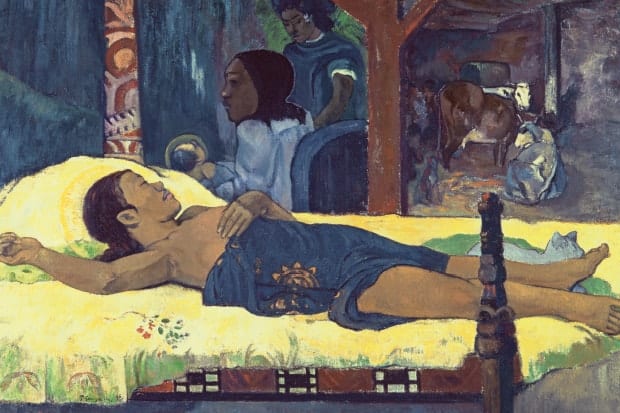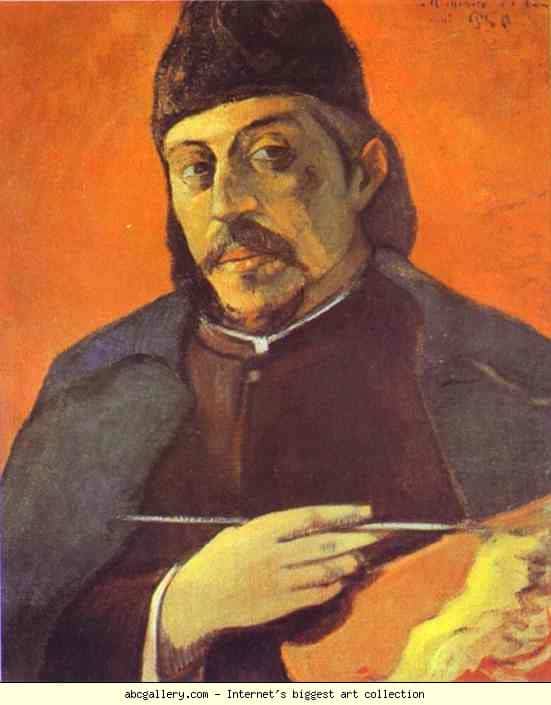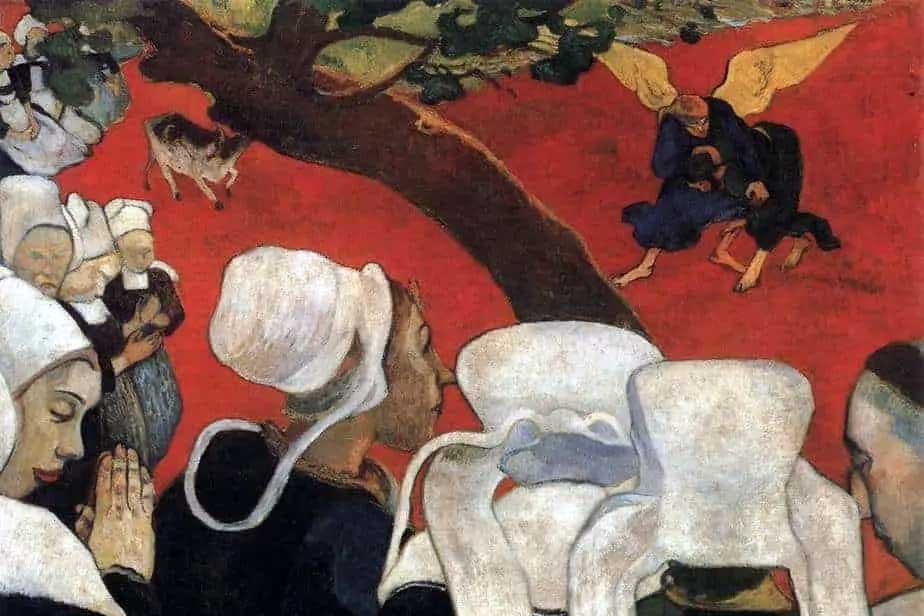Paul Gauguin – An artist who had a quest for a lucid form of painting, which he believed had been lost and attempted all this life through diverse methods to restore.
The Story of Paul Gauguin is immensely cinematic and inspirational.
Paul Gauguin was one of a few ordinary men who could leave mundane life to realize and fulfill a dream.
While it was fully intentional that he be recognized as a Prophet of Art, he couldn’t have imagined that he would go beyond that and be heralded by future critics as a clandestine classicist who was true from the very beginning artist of great talent.
Gauguin’s dream was not to be a painter known for exacting detail, but to be a forerunner of a new age of artistic expression and symbolism, defined not only by his art but by his character, reputation, essence, and aura
He built a legend around his life that may have at first been an act but later became a reality.
Gauguin’s composition has a strictly balanced framework of horizontals and verticals to which the harmonious rhythms of the groups of figures remain subject.

One of his great works – Te Tamari No Atua (The Birth of Christ) – a depiction of an island girl lying on her cot, a crib with oxen and a dog behind her, two helpers in the background, mother and child encompassed by a gleaming aureole, is still as moving today as when it was painted.
From Everyman to Prophet to Master: The Evolution of The Prophet Gauguin
Though Gauguin wanted everyone to think he was “a savage”, his actual life began in 1848 in Peru, where he was born to a journalist and his French-Peruvian wife, who herself was descended from Peruvian nobility. He was raised mainly in Lima, Peru, until he joined the Merchant Marine as a young man.
His days as a sailor took him to many ports of call as far away as India and the Black Sea, but he was especially entranced by Rio de Janeiro and the South American Continent from which he fancied his savage roots.
As he grew into manhood, he settled down in Paris and became a financier at a local firm. He did well, married well, and became a person of means.
With his prosperity, he began a collection of Impressionist art, which spurred a passion in him that ignited him all of his life.
As a collector, he met Impressionists like Cezanne and Camille Pissarro and became enthralled with the idea of creating his art.
It was under Pissarro’s influence and tutelage that Gauguin became an artist.
The esteemed Impressionist invited the amateur painter and stockbroker to exhibit with his fellow Impressionists.
A little more than a decade after Gauguin had begun painting as a side interest, the stock market crashed. Much to the displeasure of his wife and her respectable family, he rejected the status quo lifestyle of Europe and his place in it as a business and family man and left ordinary life entirely in pursuit of the life of an artist.
Thinking that he could never find his lost paradise in the mundane conformity of European society, he went in search of it in exotic or rural locations.
He was on a mission of discovery that led him to Panama, Martinique, Brittany, Tahiti, and the Marquesas Islands.

He also explored exotic physical locations and spiritual and esoteric dimensions.
He lived and painted in the era of spiritualism and the occult, and he, with other artists such as Maurice Denis and Emile Bernard, embraced the idea of art as prophecy, creating a group known as the Nabis, the Hebrew word for ‘prophets’.
He believed that returning to the savage and native brought the art closer to a spiritual experience. He and his fellow Nabis also maintained that they were ushering in a new era of art – and they were.
He brought that philosophy to self-creation and wove stories and legends of his life and lineage as that of Incan savage rather than Peruvian nobility.
Gauguin created many great works in far-flung locales, but he lost everything to do it. His wife and family had shunned him when their lives collapsed from his neglect, and he didn’t have a penny to his name when he died. What he did have was his legacy.
Paul Gauguin’s Art, Style, and Legacy
The romance and drama of Gauguin’s life and the dreamy subjects of his paintings sometimes pull the viewer’s mind from the skill and execution of his work.
A clandestine classicist, he was never far removed from the sophistication and beauty of classicism, even though that was never his intention.
Gauguin’s used flat planes and bold colors to elicit feeling in the viewer rather than a mere appreciation for a well-rendered piece of realistic art or the aesthetic beauty of the impressionists.
He wanted the viewer to engage with the subjects, not the art itself.
The prophet was not impressed with the European art world’s attempt at primitive art because it neither hailed from nor represented any primitive source.
On the other hand, he traveled to Tahiti to create primitive art in a primitive place.
In his work Nafea Faa Ipoipo (When Will You Marry?), his choice of composition and color give the feeling of such a place, and he doesn’t need nor use detail to impart the emotions of the central subjects of the painting.
The anti-establishment pro-savagery ideal he sought is evident in the fragile composition that features three horizontal fields of color juxtaposed with two figures placed one on top of the other in the very center of the canvas, breaking every rule of compositional placement.
This rule-breaking only adds to the feeling of the place and is completely appropriate, especially in adding to the ebullient attitude of the main subject.

The hopeful bride figure in the front is in a playful and anticipative pose while an older girl sits confidently behind.
The calming choice of hue in the three fields of color that make up the landscape brings the offset composition back into harmony and suggests peace, happiness, and the carefree joy of a simple place.
His philosophy of simple planes and clean lines does not hinder his ability to capture the expression and feeling of the girls in the piece, and in fact, only enhances the effect.
Gauguin once written – “One must always feel the plane, the wall; tapestries need no perspective”
Indeed, the suggestion is all that is needed.
His colors, subject matter, and composition complete the whole.
His many works accomplish his ideals and bring the viewer into a spiritual and emotional place close to the core of the primitive mind.
His attitude toward shape and plane influenced succeeding movements and artists in the Art Nouveau, German Expressionism, Fauvist, and Abstract movements.
His dissolute life, extreme poverty, a heart condition, and alcohol had broken the spirit and ruined the body of this seemingly indomitable, athletic man during his last days.
But Paul was a man that accomplished what so many have not, the fulfillment of a dream and the realization of his convictions into eternity.
Hey Paul Gauguin, You’re truly an inspiration to us!


